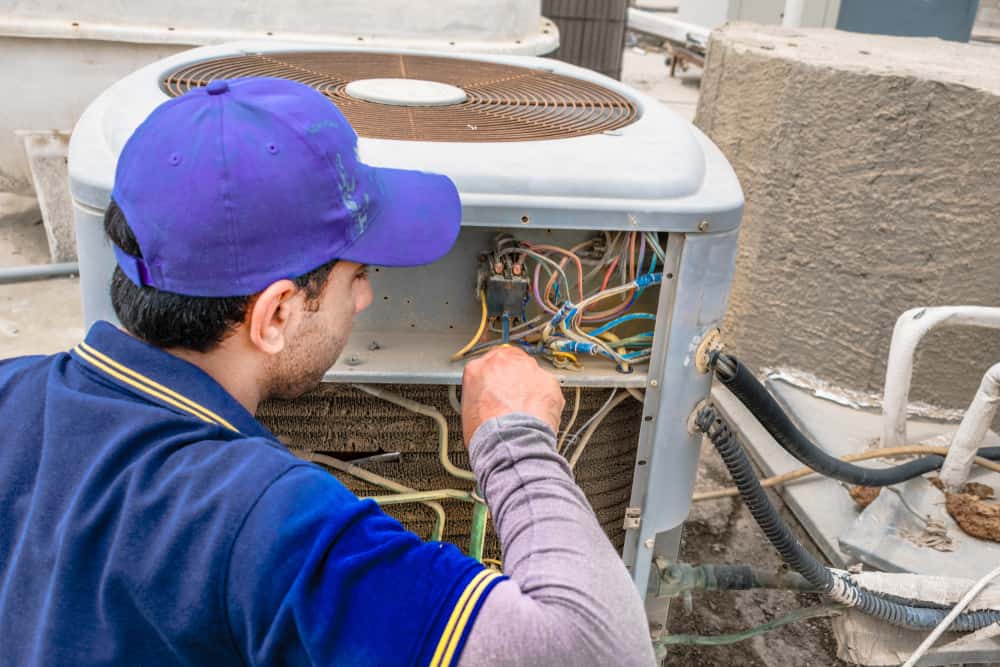Heating, HVAC, and climate control, commonly known as HVAC, is a critical part of modern life that many people don't appreciate. From the cozy atmosphere of a heated home in winter to the cool relief of air conditioning during scorching summers, HVAC systems play a crucial role in our quality of life and satisfaction. The history of HVAC is a remarkable saga that highlights human ingenuity and technological advancements over the decades, transforming the way we manage our indoor environments.
As we delve into the evolution of HVAC, we will investigate how these systems originated, their development through the years, and the breakthroughs that have shaped today's heating and cooling solutions. Whether you are a resident looking to improve your system or a business owner seeking effective climate control, understanding the history and function of HVAC is key to making informed decisions. Come with us as we uncover the landmarks in HVAC history and how they relate to the ease and efficiency of our home and working spaces.
Understanding Heating, Ventilation, and Air Conditioning Configurations
HVAC, that refers to heat, ventilation, and air conditioning, is a crucial system in both home and commercial buildings. Its chief purpose is to deliver comfort by regulating indoor heat levels, managing humidity levels, and ensuring optimal air quality. These units combine various technologies to enable warmth during colder months and cooling during summer seasons, making them essential for all-season comfort.
The components of an HVAC system typically consist of a heater or boiler for heating, an AC for refreshing, air ducts for distributing conditioned air, and airflow systems to bring in clean air and remove stale air. Advances in HVAC innovation have led to enhanced energy efficiency and more control over warming and refreshing settings, often incorporating intelligent technology that enables homeowners and companies to maximize their energy consumption and lower costs.
An effective HVAC setup not only boosts convenience but also is essential in upholding indoor air quality. By cleaning and distributing air, these systems minimize irritants and pollutants, which is notably vital for people with breathing conditions. Proper knowledge and maintenance of HVAC components can lead to a healthier living space and more efficient operation, ultimately saving energy and lowering energy bills.
HVAC Care and Effectiveness
Regular maintenance of your HVAC system is crucial for ensuring its efficiency and durability. A regularly serviced system not only functions optimally but can also lead to significant savings on utility bills. Basic care tasks include replacing air filters regularly, cleaning ducts, and monitoring the thermostat configuration. By keeping these components in good condition, you can prevent unnecessary strain on the unit, which often results in expensive repairs and inefficient energy use.
In furthermore regular upkeep, seasonal maintenance is important for improving your equipment's efficiency. Spring and spring are optimal times to book qualified tune-ups, as these periods typically involve switching between warm and cool modes. Technicians can evaluate various aspects, such as refrigerant levels, electrical wiring, and motor functions, ensuring that your system works effectively when it is most required the most. Ignoring these seasonal check-ups can lead to surprising breakdowns when temperatures spike or fall.
Boosting the efficiency of your HVAC unit can also be realized through smart technology and upgrades. Adopting a programmable thermostat provides better temperature control according to your routine, reducing energy consumption when you are away. Moreover, consider investing in https://notes.io/wZX5h -friendly appliances or segmented heating and cooling solutions. Over time, these innovations can greatly improve system efficiency, reduce your carbon footprint, and lead to substantial cost savings on utility bills.
Innovations in Heating, Ventilation, and Air Conditioning Technology
The heating and cooling sector has seen noteworthy progress over the decades, leading to increased effectiveness and greater comfort for users. Smart thermostats are one of the most significant innovations, allowing users to control their climate control systems via smartphone apps. These devices adapt to user choices and adjust settings without input, resulting in reduced energy use and reduced energy costs. Additionally, compatibility with smart home technology enables easy control of HVAC together with other intelligent home gadgets, boosting overall comfort.
Another innovation in HVAC systems is the creation of variable refrigerant flow systems. These units enable accurate temperature control and efficient operation by modifying the amount of refrigerant flowing to the inside components based on demand. This adaptability not only enhances comfort but also considerably lowers energy expenditure compared to conventional systems. Innovations in ductless mini-split systems have made heating and cooling more available for houses without current ductwork, allowing for tailored climate control in individual rooms.
Geothermal heating and cooling systems represent another state-of-the-art solution in HVAC systems. By harnessing the earth's stable underground temperature, these systems can provide highly efficient heating in the cold months and cooling in the warm season, often with significant energy savings. The starting expenses may be higher, but the long-term benefits include reduced utility costs and a reduced carbon footprint. As advancements continues to evolve, HVAC systems are becoming more advanced, more efficient, and better aligned with sustainable practices, defining the next phase of heating and cooling.

